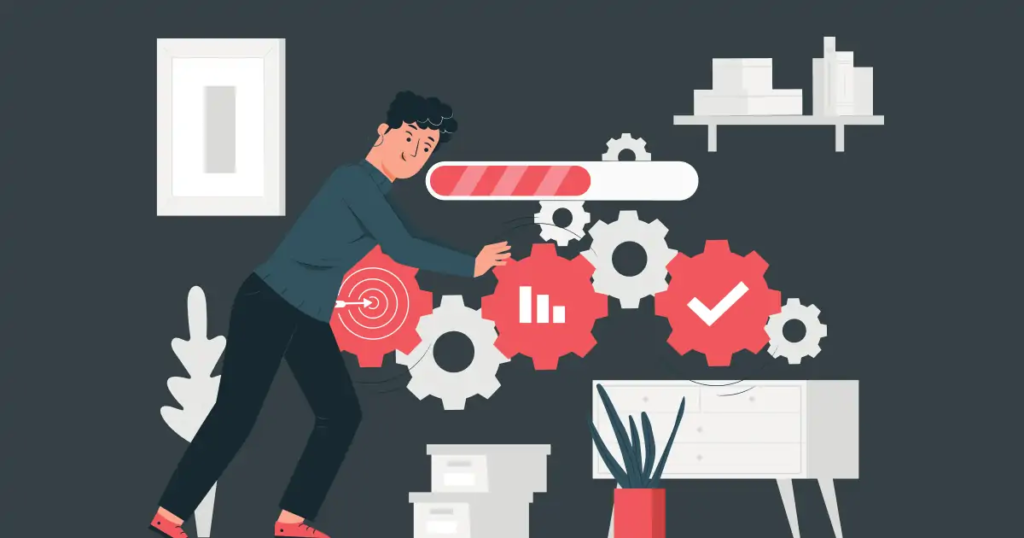In previous blogs, we discussed basics such as what is a design system? How beneficial is it? And how does it operate?
Yet A successful design system is well implemented and well maintained one that fulfills the role of team player into accelerating the design process and creating more consistent user interfaces and experiences
This article holds practical recommendations to well manage a design system and how to guarantee its long-term success within an organization.
Setting the right conditions to adopt a design system

Design Systems are a big project to initiate. It is hard to imagine how many hours of work and how much budget it costs to create one but it is 100% worth it. You can always think of building your own design system but you can also skip all the burden by benefiting from existing ones.
It took months to build the vision we wanted to create with CLARA design system to help teams and organizations design more efficiently than ever by providing best practices to lead teams throughout the design process and adequate components and patterns accordingly with every typology of a digital product.
What is important is to encourage your team to react to the positive change and help them with the design system induction phase. It might take time to accept and operate smoothly with the new system but sure results and offered solutions will pay off faster and with high consistency. People will surely welcome the system precisely once they find it to be valuable to their work.
The required steps to well adapt a design system are:
Setting a vision statement
What shared vision are you looking for? Where are you aiming to go with your design system? What impact are you expecting in years?
Establish your goal design guidelines
What defines a good design according to your vision? What process will guide you to achieve that design?
Clara Design System eliminates subjective ideals and sets clear standards that help team members make user-centered design decisions.
GET BUY-IN FROM STAKEHOLDERS
Not only your team members should buy the idea of enhancing the design process with a design system but stakeholders need to buy it as well and understand that the system is there to solve real design problems.
Set a solid foundation for the design system
you need to set a solid foundation for your design system. Again, you don’t need to start from scratch. www.dravyafolio.me has made pixel-perfect UI kits elevating sketch and adobe XD, especially for design systems. The kits include all of the basic components you need to start designing at scale, such as buttons, inputs, search, tabs and ready to use interface design, etc.
Establish a design system governance system
A design system should be governed. Clear roles should be given to different team members
- Who approves changes
- Who handles requests for new components
- Who uses the feedback system
Identify a design system team model
The organization of a design system is really important to its scalability.
There are many models to handle a design system choosing the right working model will make work effortless and collaboration well succeeded.
The Solitary team model
It is an overloaded, solitary model that practices a solo approach. It has validity in certain situations. When we say solitary we mean one single team that exploits the design system to primarily serving its needs. This model is considered poor yet it is still useful for teams whose problems are partially handled by existing systems. A solitary team’s primary motive is inward on their own product.
The centralized team model
This model provides full support to the system by centralizing decision making and helping other teams learn and apply systems in order to serve many products with equal chances, identify opportunities, setup practices, and processes to validate any design.
Ultimately, a centralized team can provide a great service and create value in efficiency, consistency, and capacity.
The Federated team model
This model works on prioritizing certain projects over others by filtering talent and assigning the best designers for the most important products. It operates like a committee that judges per project. And so Designers from multiple product teams decide on the system together, making collectively agreed decisions that are beneficial for work, limit individual perspective, and bring relevance to many projects. Mature teams overcome differences for enabling perspectives and respect for the most experienced individuals.
Take Clara as your next team player and benefit from exclusive features
Clara Design System is a methodology, a path, and a comprehensive guide for project design that facilitates and shortens the design process and allows involved teams to collaborate better.
Our team always believed that consistency in design isn’t something you add when you finish designing, it’s a whole mindset and a process, to meet user expectations and so we developed the Clara Design system method for powerful digital product designs.
This is how it works:
- Integrate Clara in your design process
- Allow involved teams to collaborate
- Use dravyafolio ready-to-use UI kit library or Create your own functioning UI components and patterns
- Leverage Clara detailed toolbars to fully control discernible components








